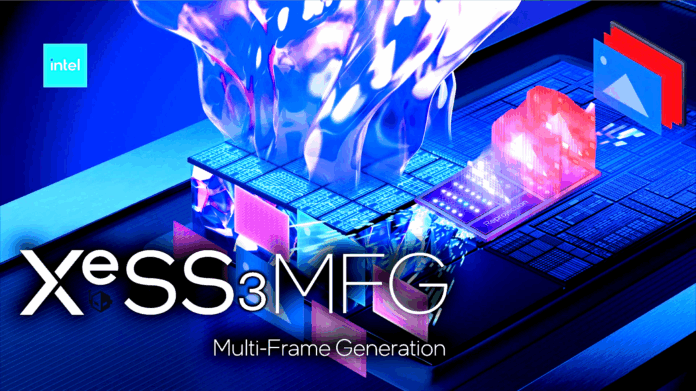Intel has announced the next generation of upscaling with XeSS 3. It will have its own multi-frame generation, which will initially only allow a limited selection of dGPUs.
At this year’s Tech Tour, Intel not only gave an optimistic outlook for integrated graphics cards, but also announced the new upscaling generation in the form of XeSS 3.
The third version of Xe Super Sampling comes with Multi Frame Generation (MFG), making Intel the second GPU provider after Nvidia to announce such AI technology.
XeSS 3 also has an advantage over the Geforce solution.
XeSS-MFG: Up to four additional frames
First things first: The official announcement of XeSS 3 (via wccftech) also included the unveiling of XeSS-MFG, which refers to Intel’s own Multi Frame Generation.
Similar to Nvidia, two previous frames are used for output. Based on various parameters, such as motion vectors, XeSS-MFG calculates an “optical flow network” that serves as the basis for calculating up to four additional frames.
When XeSS-MFG is launched, the new feature will initially only be available via driver override – so you’ll have to take action yourself to get multi-frame generation with two, three, or four times the output running on your Intel GPU.
When this release will take place depends on the next CPU series: According to Intel, XeSS 3 will launch at the same time as the Panther Lake generation, which in turn will rely on the new Xe³ GPU cores.
The key point is that XeSS-MFG will not be exclusive to the current Arc generation. Intel is thus taking the opposite approach to Nvidia, which explicitly only enables its MFG variant for the current RTX 50 GPUs.
Intel’s Multi Frame Generation will initially launch for the Xe² series (i.e., Battlemage and Core Ultra 200V), but older models with first-generation Xe cores are also expected to be MFG-compatible at a later date. In addition to the Alchemist GPUs, this also includes the processors known as “Core Ultra 200H” with integrated graphics units.
For game developers, there is another positive side effect of XeSS 3: since the interface remains unchanged, it should be (relatively) easy to bring XeSS 2-enabled games to the new generation.


